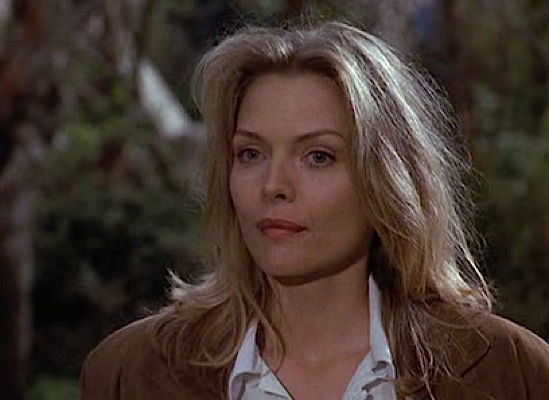Wolfman Jack or Pack Man or Once Bitten
Some movies fight against themselves. The plots go in a pre-determined direction, driving us away from where we'd rather be. That's what I was thinking while recently watching Wolf for the first time since it was released in theatres in 1994.
The story, if you're not familiar, is about a book editor who, on a full-moon night, hits a wolf with his car. He goes out to check on the animal and gets bitten. He later turns into a werewolf--though the movie never uses this word.
It's not your average horror film, however. It's a classy, upscale piece, starring Jack Nicholson and Michelle Pfeiffer and directed by Mike Nichols. If nothing else, this meant it was expensive enough not to show a profit.
What's intriguing about the film is the human story, not the supernatural one. Nicholson plays a middle-aged, mild-mannered book editor who's being ousted by a conniving, younger editor (James Spader at his slimy best) when a billionaire (Christopher Plummer) buys out his publishing house. Michelle Pfeiffer is the billionaire's daughter who ends up having a not especially believable love affair with Nicholson--the two have chemistry, but things seem rushed. (She and Nicholson had played together before in another magical film, The Witches Of Eastwick (1987), though Pfeiffer wasn't the star then she soon would be.)
The more the literal werewolf story takes over, the less interesting the film becomes. Nichols is trying to show what being a werewolf might be like on a realistic level, but he can only get so down and dirty, and thus we don't get most of the thrills that cheap horror gives us. (And I wonder how much of the final scenes with the greatest violence were Nichol's original concept--he had to reshoot the ending when it didn't play well. My guess is that it wasn't just about upping the gore content, but also giving the lovers a happier ending.)
So what works in the film? The stuff about publishing. The film, at its best, is about how turning into a werewolf is a metaphor for turning into a man. When we first see Nicholson, he's defeated--he does his work quietly, behind the scenes, while less talented people pass him by. But once his blood is up, he feels tougher, his senses more acute. Now he becomes the hunter, not the prey, and soon has Plummer and Spader at his command. That stuff plays like a well-made satirical drama, while the horror elements drag it down.
The film looks pretty good, and, while allegedly taking place in New York, features the memorable interior of Los Angeles's Bradbury Building. Just as awe-inspiring is Pfeiffer, maybe the most beautiful woman ever in movies. Also--don't blink--there's a still-unknown Allison Janney and David Schwimmer.



2 Comments:
Ah, that was our first date, ColumbusGal and me. At a drive in, no less. The clincher was when I let her drive my 55 Chevy pickup.
A parable about an old man asserting his virility. Since old guys have all the money, we tend to get a lot of movies like this.
(why do I suddenly have to pick up pictures of rivers and trucks and food now to post?- It's les spammeurs, isn't it?)
Post a Comment
<< Home